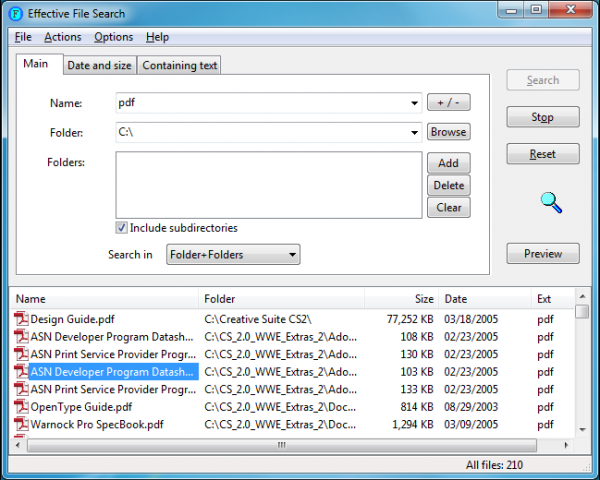It is easy to find large files in Mac OS X. if you are running out of hard disk space, you may want to compress, delete, or move them to another disk. Here is how you can locate the large files on your hard drive.
This will tell the OS to find the 'text to find' in every file in every directory, all the way down through the tree. The -r flag tells grep to recursively search directories. Of course, OS X has something like 26,000 files, so this can take a very long time!
Steps:
1.Open the Finder by clicking its icon from the Dock.
2.Click Go > Home.
3.Now click File > Find
4.Click on “Kind” filter and select “Other”.
5.Check “File Size” from the list, and then click OK.
6.Now change the “equals” to “is greater than,” and change the “KB” to “MB” or “GB”. Of course you can change this values, anything you like. When you enter a file size, search will begin and the lists below will automatically update, depending on your values.
Related:How to check your hard disk space on your Mac
Obsessed with tech since the early arrival of A/UX on Apple, Sudz (SK) is responsible for the editorial direction of AppleToolBox. He is based out of Los Angeles, CA.
Sudz specializes in covering all things macOS, having reviewed dozens of OS X and macOS developments over the years.
In a former life, Sudz worked helping Fortune 100 companies with their technology and business transformation aspirations.
Related Posts:
The Storage tab does not always report correctly. Look in About this Mac > System Report > Storage. Also check by choosing your Mac HD and 'Get Info' (command-i). It may be different. Try rebuilding Spotlight index.
Some of the space may also be from Time Machine Snapshots if you are using a laptop.
After you've freed up some space download Omni DiskSweeper. It can give you a more accurate read of disk space than Finder or Storage Tab of About this Mac. Itcan also show you the precise size and location of all your files.It can also give you a more accurate read of disk space than Finder or Storage Tab of About this Mac. Itcan show you the precise size and location of all your files. It will inventory your disk starting from the files that take up the most space. It can also give you a more accurate read of disk space than Finder or Storage Tab of About this Mac. If you want you can even delete files from OmniDisk Sweeper. But be careful some of the items may be important to your system.
SimCity 4 is a city-building simulation computer game developed by Maxis, a subsidiary of Electronic Arts.It was released on January 14, 2003. It is the fourth major installment in the SimCity series. SimCity 4 has a single expansion pack called Rush Hour which adds features to the game. SimCity 4: Deluxe Edition contained the original game and Rush Hour combined as a single product. Simcity 4 deluxe for os x.
Os X Find Largest Files

For information about the Other category in the Storage display, please see Apple Support Topic
https://safeomg.netlify.app/understanding-problem-report-for-os-x.html. Jan 10, 2020 How to collect logs when a problem occurs AFTER OS X deployment (Mac client is installed) If OS X image deployment and the Parallels Mac Client installation were both successful, but one or more other task sequence steps failed, you can collect problem reports from: Parallels Mac Client, Parallels Configuration Manager Proxy. Dec 19, 2010 Question: Q: Problem Report for Mac OS X - Please help! Hi there, I am a new Mac user and since I got my iMac I am having these issues when my computer about every 2. With OS X Mountain Lion and later, your Mac saves the log of which apps and process were running, and will offer to reopen them when it restarts after a kernel panic. Simply click the Open button on the “You shut down your computer because of a problem.” dialog box when it’s presented during the login process. Check out our tutorials on Windows Basics and specific Windows versions for more information. MacOS (previously called OS X) is a line of operating systems created by Apple.It comes preloaded on all Macintosh computers, or Macs. Some of the specific versions include Mojave (released in 2018), High Sierra (2017), and Sierra (2016). According to StatCounter Global Stats, macOS users. As mentioned above, the X-releases use the 'Dxx' suffix instead of 'Rxx' to indicate the maintenance release(.) number. Unlike with 'R' numbers in common Junos, the 'D' numbers do not start at 1 and count up from there. Instead, it works as follows. The first release shipping (FRS) in X.
Also, empty the Trash if you haven't already done so. If you use iPhoto, empty its internal Trash first:
iPhoto ▹ Empty Trash
Shows the cursor again. , unsure what name it has) + right-click always! Cursor for windows vista.
Osx Search For Large Files
In Photos: File▹ Show Recently Deleted ▹ Delete All
Os X Search For Large Files In Outlook
Dec 25, 2017 5:46 AM